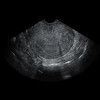
 IJCP Editorial Team
IJCP Editorial Team
Omental Herniation: A Complication of Drain Site - A Case Report
Abstract
Intraperitoneal drains are usually inserted in abdominal surgery for the purpose of preventing fluid accumulation. However, the efficacy and safety of using abdominal drains following abdominal surgery have been contentious. In obstetrics and gynecology practice, drains are kept during ruptured ectopic with gross hemoperitoneum or with cesarean section and laparotomies with difficult hemostasis to prevent abdominal collection of blood. We present the case of a 33-year-old female who underwent left-sided salpingectomy with right side tubal ligation and developed omental herniation at the drain site on post-op Day 8.
Introduction
The dictum “when in doubt, drain”, from Lawson Tait, is well-known to most surgeons. An intraperitoneal drain, commonly used by surgeons usually inserted in abdominal surgery for the purpose of preventing fluid accumulation had always been controversial. These drains have been noted with complications such as secondary infection, intestinal perforation, adhesions, hemorrhage and migration.1 Omental herniation at the drain site is one of the complications and illustrated case report is about the omental herniation through drain site.
Case Report
A 33-year-old female, G4,P3,L3 came to Gyne casualty of ESI Hospital, Basaidarapur, New Delhi, with history of 6 weeks of amenorrhea and spotting per vaginum and pain abdomen. Her urine pregnancy test was faintly positive. She was diagnosed as a case of left side ruptured ectopic pregnancy and was operated in emergency and left-sided salpingectomy with right side tubal ligation was done; since, there was 750 cc of hemoperitoneum, after thorough suction, a pelvic drain was kept for drainage. Patient was uneventful in post-op period. Drain was removed on Day 5 of surgery when drain output was 25 cc in the preceding 24 hours and dressing was done. On post-op Day 8, when patient was called for stitch removal, a red fragile mass of around 2 × 2 cm was protruding from drain site. Mass was nontender, firm and nonreducible.
According to patient, she developed cough on post-op Day 5. USG whole abdomen was done to rule out any bowel involvement. Patient was again taken up in OT with preparation of laparotomy. Surgeons were called for bowel exploration. Initially, drain site incision was increased to 3 cm, mass was reached till the base and it was found to beomental in origin. Mass was excised and drain site was closed with interrupted stitches. Histopathology report confirmed presence of fibro-fatty tissue, which was suggestive of omentum. Post-op period was uneventful and patient was discharged.
Discussion
The efficacy and safety of using abdominal drains following abdominal surgery have been contentious. Surgical drain use may be kept for therapeutic purposes i.e., to evacuate existing collection of fluid or for preventing collection of fluid prophylactically. There are reports of herniation of intestine,2 appendix,3 omentum,4 gallbladder5 (single report) and ovary6 (single report) from surgical drain site. In obstetrics and gynecology practice, drains are kept during ruptured ectopic with gross hemoperitoneum or with cesarean section and laparotomies with difficult hemostasis to prevent abdominal collection of blood. In our patient a passive, closed Penrose drain (no. 32) was placed prophylactically in pouch of Douglas. The drain used had side holes which do not have any influence on drainage but lead to tissue entanglement. Predisposing factor for herniation are recurrent increase in intraabdominal pressure caused by coughing or straining, prolonged surgery, poor nutrition, wound infection, obesity and steroid use which are known to cause poor healing and herniation.7 It has been reported that herniation of viscera increases with increase in port size ≥10 mm.8 Where ever possible fascial defects of ≥10 mm should be closed. Large meta-analyses9 have revealed that the indications of prophylactic drains should be minimized in case of uncomplicated surgeries. In our case, the patient developed cough on post-op Day 5, which led to herniation of omentum. Whenever a drain is kept, cough, straining and wound infection should be prevented to avoid such complications. Wrong technique of insertion and removal can also be a causative factor but it was not so in this case. Asymmetrical method which causes peritoneal stretching for insertion of drain should be used rather than using direct stab incision. If a stab incision is to be made, it should be made obliquely and not reach the peritoneum, so that the latter is stretched as the drain is inserted. While removing, gradual sustained pressure should be used to withdraw the drain.
Conclusion
Though the surgical drains are used infrequently in obstetrics and gynecology, more restricted and judicial use should be practiced still to prevent complications. In the postoperative period, predisposing factors should be addressed properly to prevent further complications.
About the author:
Shweta Singh, Senior Resident, Dept. of Obstetrics and Gynecology, ESI-PGIMSR, Basaidarapur, New Delhi
Taru Gupta, Professor, Dept. of Obstetrics and Gynecology, ESI-PGIMSR, Basaidarapur, New Delhi
Sangeeta Gupta, Senior Consultant, Dept. of Obstetrics and Gynecology, ESI-PGIMSR, Basaidarapur, New Delhi
References
- Mosley JG, Jantet G. Herniation at the site of an abdominal drain. Br J Clin Pract. 1978;32(2):56, 58.
- Kulkarni S, Krijgsman B, Sharma D, Kaisary AV. Incarcerated small bowel hernia through drain site. Ann R Coll Surg Engl. 2004;86(6):W24-5.
- O’Riordan DC, Horgan LF, Davidson BR. Drain-site herniation of the appendix. Br J Surg. 1995;82(12):1628.
- Howard FM, Sweeney TR. Omental herniation after operative laparoscopy. A case report. J Reprod Med. 1994;39(5):415-6.
- Vedat B, Aziz S, Cetin K. Evisceration of gallbladder at the site of a Pezzer drain: a case report. Cases J. 2009;2:8601.
- Pianon P, Lise M. Exteriorization of an ovary: an unusual complication of abdominal drainage. Br J Surg. 1992;79(9):963.
- Loh A, Jones PA. Evisceration and other complications of abdominal drains. Postgrad Med J. 1991;67(789):687-8.
- Dulskas A, Lunevičius R, Stanaitis J. A case report of incisional hernia through a 5 mm lateral port site following laparoscopic cholecystectomy. J Minim Access Surg. 2011;7(3):187-9.
- Gurusamy KS, Samraj K, Mullerat P, Davidson BR. Routine abdominal drainage for uncomplicated laparoscopic cholecystectomy. Cochrane Database Syst Rev. 2007;(4):CD006004.

IJCP Editorial Team
Comprising seasoned professionals and experts from the medical field, the IJCP editorial team is dedicated to delivering timely and accurate content and thriving to provide attention-grabbing information for the readers. What sets them apart are their diverse expertise, spanning academia, research, and clinical practice, and their dedication to upholding the highest standards of quality and integrity. With a wealth of experience and a commitment to excellence, the IJCP editorial team strives to provide valuable perspectives, the latest trends, and in-depth analyses across various medical domains, all in a way that keeps you interested and engaged.










Please login to comment on this article